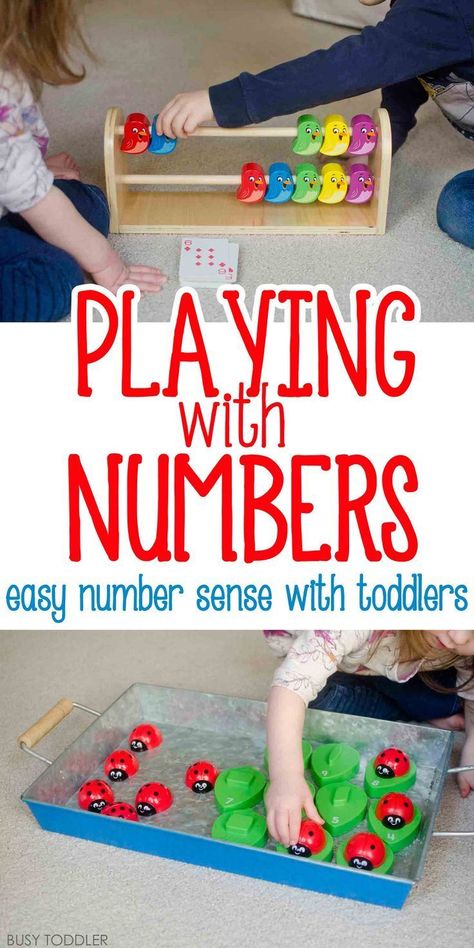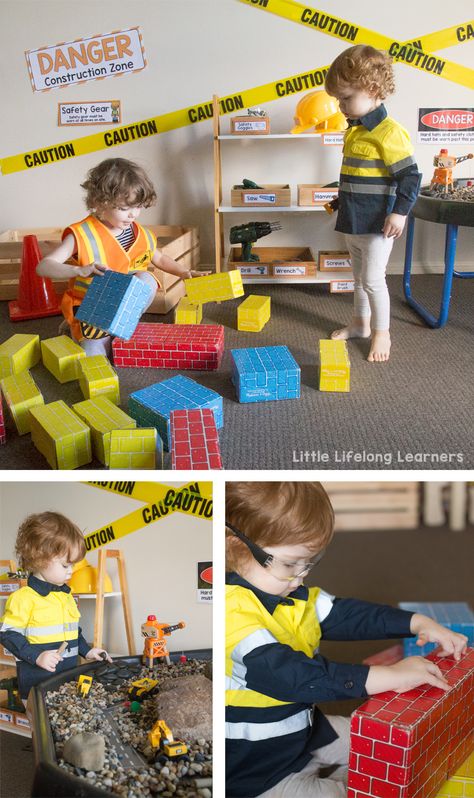Preschoolers learning through play
Learning Through Play in Preschool
Site Search
Site Search
Shop Now
Teaching Tips
January 6, 2020
0
3 minutes
To play or not to play? That seems to be the perennial question in early education—and one that has been a hot button issue in recent news. As mounting evidence suggests that children do better in school in the long run when their pre-K curriculum is play-based rather than didactic, discovery play in the classroom has never been more important. In fact, at a featured session at NAEYC this year, hands-on learning through the use of makerspaces was discussed as a way to promote creativity and active learning in the classroom.
So what exactly is a makerspace and how can it promote play-based learning?
What is Play-Based Learning?Play-based learning embraces giving children time to carry out their own ideas through play. Children are allowed to explore information in their surroundings in an experiential, exploratory way, rather than in a didactic, script-based format. Play-based learning incorporates sensory learning and can include activities such as the arts, nature, and music. The teacher’s role in play-based learning is to provide the children with stimulating, imaginative ways to play and assist them in their exploration. The primary difference between the two methods of learning is that play-based learning is student-initiated, whereas didactic learning is teacher-led.
What Is a Makerspace?
A makerspace is a designated space in a classroom that is designed to keep versatile materials at a child’s fingertips for “making.” Your makerspace could be a table, countertop, cart, or a structure you build yourself. Keep it stocked with hands-on materials that promote innovation. Whether the end result is a model house, a drawing, or a robot, having a variety of multisensory tools on-hand will encourage students to create through play.
The Importance of Children Learning Through PlayNumerous studies conclude that play is an integral part of learning for preschoolers. An article in The Washington Post suggested that inadequate playtime and movement can cause problems in children such as clumsiness, difficulty paying attention, trouble with emotional responses, and poor problem-solving methods among a host of other developmental issues.
An article in The Washington Post suggested that inadequate playtime and movement can cause problems in children such as clumsiness, difficulty paying attention, trouble with emotional responses, and poor problem-solving methods among a host of other developmental issues.
Another study in Germany compared 50 play-based classes with 50 early-learning centers and found that the children in play-based classes excelled over the children in early-learning centers. The study concluded that children in the play-based groups were more advanced in reading and math, as well as in the areas of intelligence, creativity, oral expression, and “industry.”
What is a Makerspace?A makerspace is a designated space in a classroom that is designed to keep versatile materials at a child’s fingertips for “making.” Your makerspace could be a table, countertop, cart, or a structure you build yourself. Keep it stocked with hands-on materials that promote innovation. Whether the end result is a model house, a drawing, or a robot, having a variety of multisensory tools on-hand will encourage students to create through play.
At Learning Without Tears, our goal is to make learning fun and easy. We offer multisensory, play-based tools and activities for children to learn vital kindergarten readiness, reading, and writing skills. Play-based learning tools like Roll–A–Dough Letters® give children tangible ways to create and play. Remember to keep your makerspace well-stocked with materials that make it easy to build and innovate: our Mix & Make Shapes™ help children use their imagination to make patterns and build designs.
Related Tags
Multisensory Learning Teaching Tips
Multisensory Learning
Boost Early Learning Success by Recognizing and Improving Executive Functioning
December 19, 2022
0 2 mins
Readiness, Summer, Teaching Tips, Multisensory Learning
5 Ways to Support Your Students this Summer
June 7, 2022
0 5 minutes
Readiness, Summer, Teaching Tips, Multisensory Learning
4 Guidelines to Support Students Over Long Breaks in Learning
February 14, 2022
0 5 mins
There are no comments
Stay Connected and Save 10%Sign up for our newsletter and get the latest updates, Classroom tips & free downloads.
Comments
The Benefits of Learning Through Play
In Activities by Educational Playcare
Research shows that learning through play is an important part of a child’s development. Though ensuring your child has enough play time is a great benefit to families to allow their children to release some extra energy, a child begins to find out who they are through play, even during infancy. Even early in development, a child’s mind is expanding just by looking at their environment and taking in their surroundings.
Through play and with the use of educational toys, children learn many different skills they will need in their life such as:
- Problem solving and learning cause and effect
- Learning how to play with others through compromise, conflict resolution and sharing
- Development of fine and gross motor skills
- Nurturing their creativity and imagination
- Discovering their independence and positive self-esteem
Children can start benefiting from educational toys as early as one month old. For young infants, sensory play will help stimulate your child’s senses. Mobiles, soothers and infant play gyms are great first toys for children as they focus on sensory play through sound, sight and touch. As your child continues to grow and develops hand-eye coordination, families can begin introducing toys that encourage more interaction such as portable toys which will continue to inspire visual and hearing senses with flashing lights and different sounds.
For young infants, sensory play will help stimulate your child’s senses. Mobiles, soothers and infant play gyms are great first toys for children as they focus on sensory play through sound, sight and touch. As your child continues to grow and develops hand-eye coordination, families can begin introducing toys that encourage more interaction such as portable toys which will continue to inspire visual and hearing senses with flashing lights and different sounds.
As your child gets older, introducing age appropriate toys will help them continue to learn and hit their milestones. Problem solving toys such as stackers or blocks will help your children work through conflicts and develop an understanding of cause and effect. These types of educational toys will also help them build confidence once they’ve learned how a toy works after trial and error. As your child becomes more mobile, you can introduce walkers to help teach them about coordination and balance. You can also introduce numbers by counting your child’s steps.
For older children two years or older, introducing toys that promote physical play. When they are old enough to use a tricycle, bike or roller-skates, ensure your child understands the safety concerns that comes with these toys and incorporate wearing a helmet and/or other protective gear in the process of using these toys. Families can continue to promote creativity and problem-solving skills by giving your children more complex building sets. Children will also become familiar with how words they hear look on the pages by families spending time reading together.
Learning through play doesn’t stop in the house or in the classroom. The importance of outdoor play for young children cannot be overstated. That’s why we suggest families bring learning to the great outdoors! Go on a walk and gather nature objects such as sticks, leaves, etc. to use in art projects later. Families can simply just enjoy the outdoors with some fun water play or bringing a blanket and some toys outside to enjoy.
Incorporating play in your child’s day can be both fun and beneficial to their growth. What toys do your children love that help promote learning and growth?
Get EPC's Weekly Blog Post in Your In-Box
Get the latest content first.
We respect your privacy.
how children learn through play
Twenty years ago, children in kindergarten, and sometimes even in first and second grade, spent a lot of time playing. However, now more and more often in the classroom there are tasks that were previously used for older children. Children from 4 and 5 years old learn to write, read, sit at tables and draw letters.
The idea of early learning seems obvious - the earlier children start learning, the more they can learn.
However, a growing number of academics, educational researchers and educators are challenging this notion. In the long term, it turns out that children suffer from tasks that are inappropriate for their age, get stressed, and most dangerously, lose motivation for learning, considering it to be something difficult, boring and uninteresting. nine0007 Scientists have concluded that children under 7 or even 8 years of age understand and learn better through exploration and play than through didactic explanations.
nine0007 Scientists have concluded that children under 7 or even 8 years of age understand and learn better through exploration and play than through didactic explanations.
* What is play for a child?
- imitation of reality, which may be inaccessible to the baby
- the opportunity to try on different roles
- handling different objects
- the joy of learning and fun
* What does the game give the child?
In addition to the academic component that is present in the game methodology, the game develops many of the most basic and therefore the most important skills - practical, everyday and social:
- feel loved, happy and needed
- children learn confidence through play
- play develops physical qualities
- play develops social skills. The kid learns to interact with the teacher and other children, unconsciously begins to understand the difference between the individual and the collective. The child acquires such values as mutual respect, help, gratitude.
- teaches you to take care of others and the world around you
- the game develops imagination and thinking outside the box
- children get used to the rules. As you know, rules surround us everywhere: at school, at work, in public places, even at home, each of us has a certain set of rules. Without rules, the world would be in chaos. It is especially important for children to immediately understand what can and cannot be done. This helps them feel safe.
- The game develops speech skills
- An interesting game teaches concentration, which is necessary for quality work
* Which games are suitable for which age? nine0007 As you age, you will notice that your child's play style changes.
The older the child, the more experiments will be in the game with toys, games and ideas.
Therefore, at different ages, different forms of games are important for children and, accordingly, they develop different qualities in children.
Newborns and children 1-2 years old
- listening: children listen to songs, music
- tactile sensations: playing with objects of different colors, shapes and sizes
Children 3-4 years old
- large boxes or containers, large balls for exploration, drawing on them, development of the imagination
- pillows, tunnels, slides for developing balance, achieving goals, being tested
- rope, balls, paper tracks on the floor for physical development , for balance, dance music, body control skills
Preschoolers 5-6 years old
- plasticine and dough for fine motor skills
- games with objects: used food boxes, wooden sticks, plastic jars, old things and others for the development of imagination
- favorite songs and music, as well as tools for making your own sounds
- sports toys, balls, frisbees for physical development
- simple and large puzzles and dominoes for developing concentration and memory
Well-chosen games for children, cheerful mood and pleasure from the process will build the necessary atmosphere for learning. Children will be happy to learn new things, explore this world, learn to interact with other children and adults, and themselves demand new tasks and experiments. nine0007 After all, it is inner curiosity that leads humanity to progress and new knowledge.
Children will be happy to learn new things, explore this world, learn to interact with other children and adults, and themselves demand new tasks and experiments. nine0007 After all, it is inner curiosity that leads humanity to progress and new knowledge.
Fascinating and right activities!
Learn with pleasure, learn by playing!
To play and immerse yourself in Wonderland Kids, click here.
Author - Alexandra Li
Co-founder, methodologist, teacher of English and trainer of the course according to the author's methodology Wonderland Kids
Play in the development of a preschooler
nine0004 114 Play is not only a natural state for a preschool child, but also the main driving force behind his development. However, many parents underestimate the importance of the game for the development of the child, considering classes in various studios, early education, etc. to be more useful. But it is in the game that all areas of mental life are intensively developed: communicative, cognitive, emotional and personal. In the game, imagination develops, the ability to control one's behavior is formed, movements are improved. This is especially true of the role-playing game, the beginnings of which appear in the baby as early as three or four years. Observe how the adoption of the role changes the behavior of the child: a noisy, agile baby patiently and quietly sits in ambush, because he is a scout; a timid girl in the role of a teacher becomes strict and self-confident. In the game, children learn social norms, learn to manage themselves without coercion, because the rules are set by the very role that the child seeks to comply with. The game is always emotionally rich, encourages the child to monologues and dialogues, stimulating speech development. nine0003
to be more useful. But it is in the game that all areas of mental life are intensively developed: communicative, cognitive, emotional and personal. In the game, imagination develops, the ability to control one's behavior is formed, movements are improved. This is especially true of the role-playing game, the beginnings of which appear in the baby as early as three or four years. Observe how the adoption of the role changes the behavior of the child: a noisy, agile baby patiently and quietly sits in ambush, because he is a scout; a timid girl in the role of a teacher becomes strict and self-confident. In the game, children learn social norms, learn to manage themselves without coercion, because the rules are set by the very role that the child seeks to comply with. The game is always emotionally rich, encourages the child to monologues and dialogues, stimulating speech development. nine0003
Unfortunately, many psychologists write about the impoverishment of the play activity of modern children. The games of preschoolers become stereotyped, their plots and content are less and less diverse and developed, as a result, the time of playing on one plot and the enthusiasm for gaming activities are reduced. It is unlikely that a modern preschooler will, like the hero of L. Panteleev's story "Honest Word", stand on the clock in a deserted park.
The games of preschoolers become stereotyped, their plots and content are less and less diverse and developed, as a result, the time of playing on one plot and the enthusiasm for gaming activities are reduced. It is unlikely that a modern preschooler will, like the hero of L. Panteleev's story "Honest Word", stand on the clock in a deserted park.
The impoverishment of the game is due to many factors. But the fact that screen addiction of modern children contributes to this process is beyond doubt. Ready-made images, flashing bright pictures quickly accustom the child's brain to have fun at a minimum cost. Another thing is the game. To make it interesting, you need to make an effort, show imagination, creativity, the ability to negotiate with partners, and much more. The situation is aggravated by the screen addiction of parents. The picture in which each family member is busy with his gadget, unfortunately, is now very typical. Parents, having no experience of a full-fledged game in their childhood, do not teach their children to play. But it's still worth trying. nine0003
But it's still worth trying. nine0003
Here is a child of three or four years old playing with a car: he drives it along the carpet, imitates the noise of an engine... Get involved in his game, ask who he is, a driver or a passenger? Where is it heading? Offer him options for the development of the plot: carry bricks to build a house, deliver groceries to the store. Options can be very different. And then take a bar and drive it around the floor like a typewriter. Gradually, your child will learn to use substitute objects in the game (a stick instead of a spoon, a cube instead of an iron, etc.), and his play activity will move to a qualitatively new level. As the game develops, more and more play activities will take place in the mind, which anticipates the formation of an internal plan of action in elementary school. nine0003
Children take the plots of games from the social life of adults. What the child wants to do, imitating adults, but cannot due to age, he successfully does in the game.











